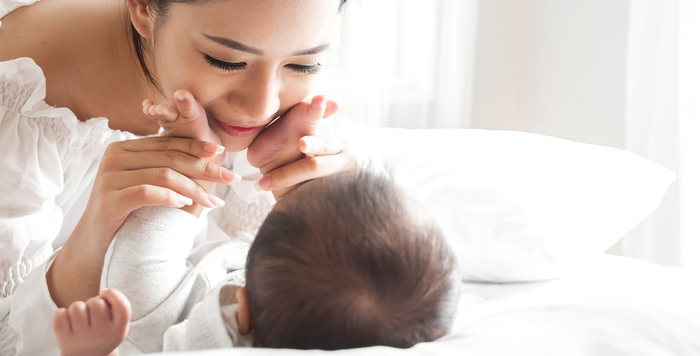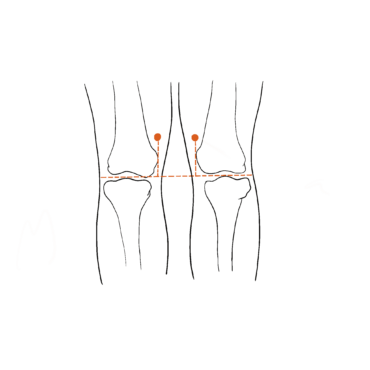Bringing a child into the world marks a significant, life-altering journey, both physically and emotionally. It’s a time of profound changes, not only for the newborn adapting to life outside the womb but also for the new mother adjusting to her new role. While the focus understandably shifts to the infant, the 12 weeks following childbirth, known as the “fourth trimester,” are equally pivotal for a mother’s well-being.
The fourth trimester spans the initial 12 weeks after childbirth. Throughout pregnancy, the body undergoes extensive physiological and hormonal changes, such as a surge in oestrogen and progesterone to support the baby’s development. Similarly, postpartum, the body experiences a significant transformation to return to its pre-pregnancy state. It is crucial for mothers to prioritise their well-being just as they did during pregnancy because healthy babies thrive with healthy, well-adjusted mothers.
Moreover, this postpartum period includes a traditional practice known as the confinement period. In many cultures, confinement refers to a designated time frame after birth when the mother receives specialised care. This typically includes a specific diet, rest, and limited physical activity to aid in the mother’s recovery. Embracing this period can provide ample time for rest and healing, allowing the mother to rejuvenate and strengthen her body for the demands of motherhood ahead. By nurturing themselves during this time, mothers can better equip themselves for the challenges of caring for their newborns. In essence, prioritising maternal well-being during the fourth trimester is a vital investment in the health and happiness of both mother and child.
TCM’s Perspective on Fourth Trimester
From a TCM perspective, the postpartum recovery period typically spans six weeks inclusive of the confinement period, beginning with the expulsion of the placenta until all organs, except the mammary glands, return to their pre-pregnancy state. After the delivery of your little one, mummies are usually more susceptible to 2 states of imbalances:
1) Qi and/or Blood deficiency, and/or
2) Blood stagnation
TCM views the Qi or energy and the Blood constituents as the basis of the human body. The imbalances of these two components will lead to the formation and manifestation of many diseases such as postpartum hives and De Quervain’s Tenosynovitis (mommy wrist). Hence, an old Chinese saying goes “吃的好,睡的好,不如月子坐的好” which translates to “Eat well, sleep well, nothing is better than sitting the month well”, implying the importance of confinement in Chinese Culture.
Hence, the primary goal of confinement is to aid mothers in recuperating from childbirth by rebalancing their Qi and Blood through dietary and lifestyle adjustments. This not only protects mothers from future health issues but also restores their strength.
It is essential to recognise that TCM’s approach to the fourth trimester goes beyond mere confinement practices. It encompasses a holistic perspective that emphasises the overall well-being of mothers during this crucial period. In contemporary times, TCM practitioners adapt traditional principles to suit modern lifestyles while preserving the core essence of postpartum recovery.
Consider Oriental Remedies x Wing Joo Loong confinement soup packages
which are tailored for modern moms in Singapore!
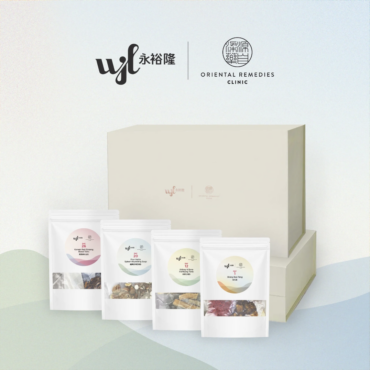
Shop online for Essential or Premium Packages
Caring for mom in the fourth trimester
- Emotional Well-being (e.g. Postpartum depression and anxiety)
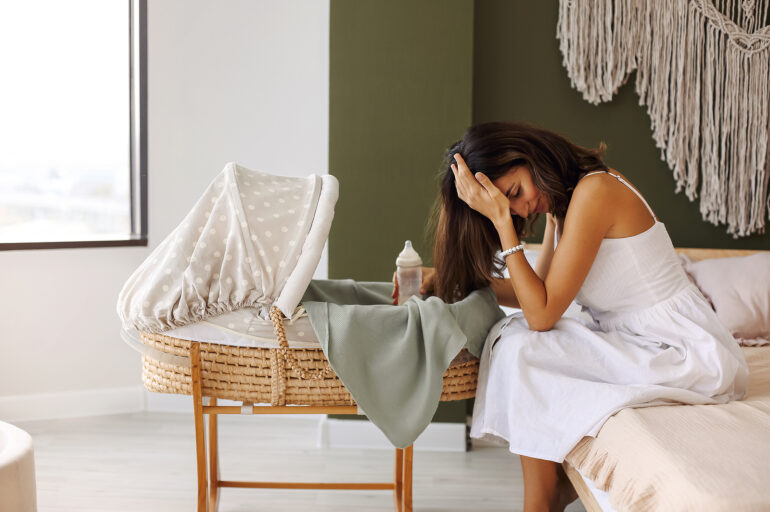
Postpartum mummies often face mental and emotional challenges, including the risk of postnatal depression. After delivery, the sudden drop in the hormonal levels may bring about “baby or postnatal blues” for the first couple of days and can turn into postnatal depression when symptoms start to aggravate and last for more than 2 weeks[1] . Contrary to what most know, postnatal depression can also start at any time during the first year postpartum [2].
According to a study by KK Women’s and Children’s Hospital (KKH), postnatal depression affects one in 14 women while antenatal depression affects one in eight women pre-COVID-19 [3]. The pandemic has contributed to the rising incidence of maternal depression [4]. TCM recognizes the importance of a healthy support system for mummies during this period as adequate rest and emotional care are vital components of TCM practices to ensure a balanced mental state while caring for the little one. An example would be breastfeeding, while rewarding, could be a plausible cause of anxiety in mummies, impacting their mental well-being.
How can TCM help:
From a TCM perspective, females rely heavily on the supply and circulation of Liver Blood for physiological functions such as menstruation, pregnancy, labour and breastfeeding. Childbirth is extremely taxing on the Liver and breastfeeding will further deplete Blood as nutrients are transformed into breast milk. Furthermore, the Liver plays an important role in the regulation of emotions through the regulation of Qi. A deficiency and stagnation of Qi could result in the inability to manage one’s emotions properly, evoking negative emotions and thoughts.
Herbal medication and acupuncture are often prescribed to calm the body and rebalance the meridians. Classical herbal formulas such as 逍遥散 (Xiao Yao San), and 天王补心丹 (Tian Wang Bu Xin Dan) could be prescribed to address both the root and symptom of postpartum anxiety. However, if you are concerned about taking herbs and nursing, you can opt for our Cell Pro Therapy, which aims to rebalance our autonomic nervous system, which is linked to our “fight or flight” response. This helps recalibrate the brain to bring their mental state to a more peaceful one. It is recommended to come for 2-3 sessions per week for maximum effect on the body.
If one is unable to come for consistent treatment, acupressure massages on points such as 太冲 (Tai Chong) LR3, 印堂 (Yin Tang) GV29, 血海 (Xue Hai) SP10 can help alleviate some of the symptoms.
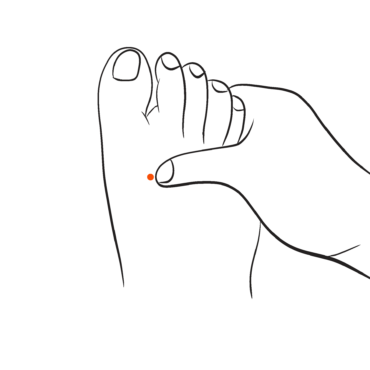 |
To locate 太冲 (Tai Chong) LR3: Tender point between the big toe and the second toe. |
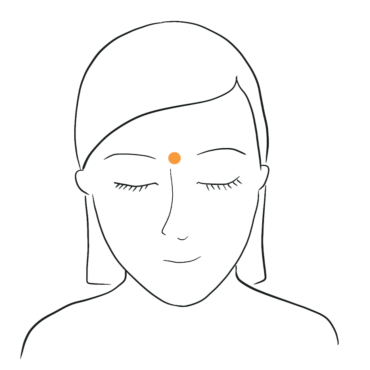 |
To locate 印堂 (Yin Tang) GV29: It is located at the midway point between the two inner sides of the eyebrows. |
|
|
To locate 血海 (Xue Hai) SP10: It is located 2 thumbs above and on the inner side of the patella. You should be able to feel the bulge of the quadriceps muscle on the inner thigh, just slightly above and on the interior side of the knee joint.
|
|
How to massage (For all acupoints) |
|
However, if you start noticing that your emotions are affecting your daily activities, it would be best to seek professional help.
- Breastfeeding Journey

A new mom embarking on her breastfeeding journey may face the concern of not having enough breastmilk or too much breast milk leading to clogged breast ducts, or worse, mastitis.
How can TCM help:
In TCM, we believe that low breast milk supply is largely associated with Qi and Blood deficiency. Hence, to enhance breast milk supply, the aim would be to boost Qi and Blood supply first to ensure sufficient nutrients for the production of breast milk. Acupuncture points such as 膻中 (DanZhong) and 足三里 (Zu San Li) work to enhance the body’s Qi and Blood as well as enhance circulation to the breast area.
Clogged breast ducts are typically due to stagnant Liver Qi, and can be accompanied by symptoms such as tender breasts. Given that the Liver meridian passes through the breast area, Qi stagnation along this meridian can impede the smooth flow of breast milk, resulting in clogged ducts. The TCM approach is centred on promoting the movement of Qi to unclog the breast ducts and TCM modalities such as herbal medication, acupuncture, and breast massage are some ways to help alleviate the blocked Qi energy. Common acupuncture points used are 少泽 (Shaoze) SI1, 足三里 (Zu San Li) ST36, 三阴交 (San Yin Jiao) SP6. When left unaddressed, clogged breast ducts may escalate into infections. In tandem, combining Western medicine and TCM can help expedite the recovery process, contributing to a comprehensive and holistic healing approach.
- Addressing physical changes
i. Hair Loss
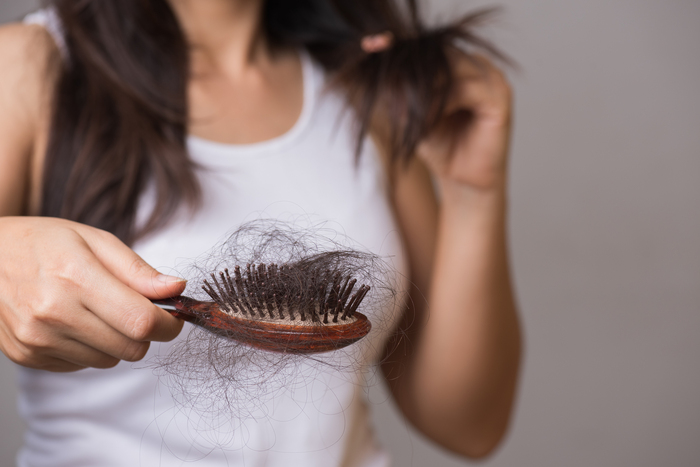
The drop in oestrogen postpartum would lead to physical changes like excessive hair shedding (a term coined by dermatologists) which usually peaks 4 months after birth. However, by the child’s first birthday, most mummies would have regained their hair growth. Despite it being self-limiting, there may be cases where the excessive hair shedding continues.
How can TCM help:
In TCM, there is a saying “ 发为血之余” which translates to “strong healthy hair is nurtured by abundance of vital blood”. The health of the hair then depends on the quality of functions of Organs namely the Kidney and the Liver. During pregnancy, there is a high demand for Kidney Yin and Liver Blood by the growing foetus, resulting in the deficiency of Yin and Blood after pregnancy. This deficiency is more common in older mothers and those who had difficulties conceiving, including mothers who have conceived through assisted reproductive procedures such as IUI and IVF. Hence, to address the issue of excessive hair shedding, our TCM practitioners would focus on replenishing these two aspects through herbal medication and/or acupuncture.
TCM herbs like He shou wu, Dang gui, and Shu di huang are typically prescribed to nourish and promote hair growth.
ii. Dull skin
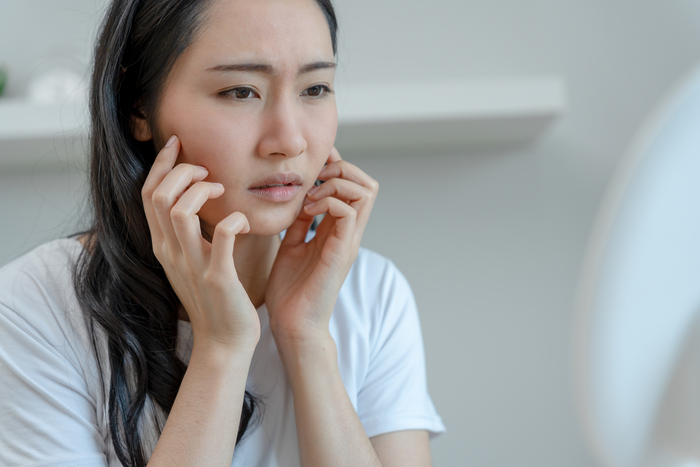
In addition to dealing with a fussy baby and enduring countless sleepless nights, new mothers often grapple with postpartum skin concerns, including a dull and dry complexion, hormonal acne, and exacerbated melasma (hyperpigmentation). During pregnancy, a woman’s body produces approximately 50% more blood[8], contributing to that coveted pregnancy glow. However, after childbirth, hormonal imbalances can trigger changes, particularly in the skin. For instance, low levels of oestrogen during the postpartum and lactating period affect the production of hyaluronic acid, collagen and elastin in the body, resulting in dull and dry complexion.
How can TCM help:
In TCM, skin issues are attributed to the deficiency and stasis of Blood. One potential remedy is facial acupuncture, an extension of traditional acupuncture designed to enhance the youthfulness, smoothness, and overall health of the skin naturally. Similar to traditional TCM acupuncture, this technique involves the insertion of needles into the skin, creating small wounds known as positive microtraumas. As your body senses these tiny wounds, the repair mode would be activated – the same way microneedling treatments work, promoting the release of chemicals for the production of collagen and elastin[9]. It would also stimulate the lymphatic and circulatory system, promoting blood flow and circulation in the face, and increasing the delivery of essential nutrients and oxygen to your skin cells needed for a natural and healthier glow while fading pigmentations. For acne, these tiny wounds would stimulate the production of white blood cells, thus absorbing the inflammation and supporting the healing of acne scars [10].
TCM believes that beauty originates from the inside out, emphasising the strong connection between health and appearance. From the TCM perspective, many meridians either start or end on the face or some have branches that extend to the face, correlating the relationship between health and appearance. Therefore, in addition to stimulating acupoints on the face, related acupoints on other body parts, such as hands and legs, are also utilised to address the underlying root cause of skin problems.
- Managing pain issues
Traditional practices observed during confinement, such as avoiding exposure to wind drafts or refraining from cold showers, are rooted in the aim of shielding the body from external pathogens. These practices align with the principles of Qi and Blood, aiming to safeguard the body, particularly against pathogenic cold.
Post-childbirth, the loss of blood results in Blood and Qi deficiency, leaving the body’s meridians vulnerable. Without due care, pathogenic cold can easily infiltrate the body, leading to Blood stasis and manifesting common symptoms like mommy’s wrist, and backache. Therefore, alongside maintaining personal hygiene, it is recommended for new mothers to adopt simple habits like promptly and thoroughly drying their hair after showering and avoiding direct exposure to wind drafts, such as those from air conditioners. These practices contribute to the overall well-being of the mother during the crucial postpartum period.
How can TCM help:
a) Managing Mummy’s wrist
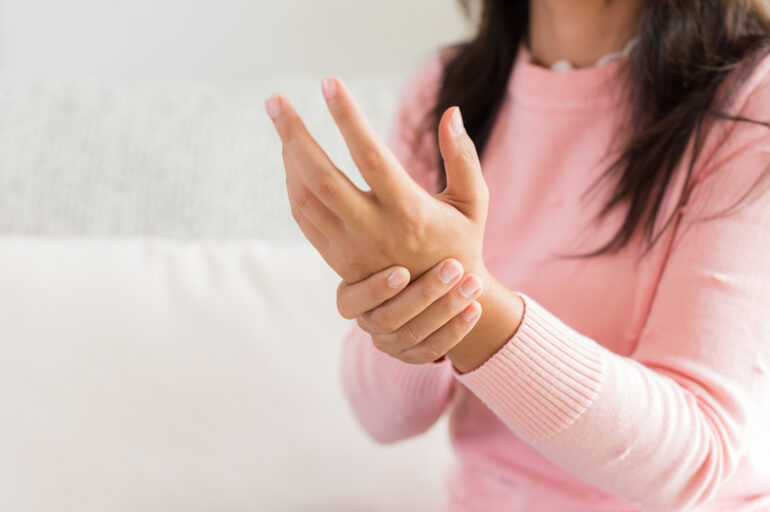
As mummies often hold their infants for prolonged periods, it can lead to strain on their wrists. We offer support through acupuncture targeted at the affected wrist, complemented by Far-Infrared Therapy (FIR) available at our clinic. The emitted infrared light possesses the ability to penetrate deeper into the skin layers, reaching the muscles and bones. Research has also shown that once absorbed by the photoreceptor in our body, this light energy kickstarts a series of metabolic events, triggering several natural processes of the body on a cellular level [11][12]. One key aspect is the release of nitric oxide, a potent cell signalling molecule that relaxes arteries, combats free radicals to mitigate oxidative stress, and prevents platelet clumping in vessels. Additionally, Far-Infrared Therapy enhances mitochondrial action within cells, triggering the growth and repair of new muscle cells and tissues[13]. In essence, infrared light accelerates the recovery process following a muscle injury by stimulating blood circulation and facilitating the regeneration and repair of injured tissues.
b) Backache
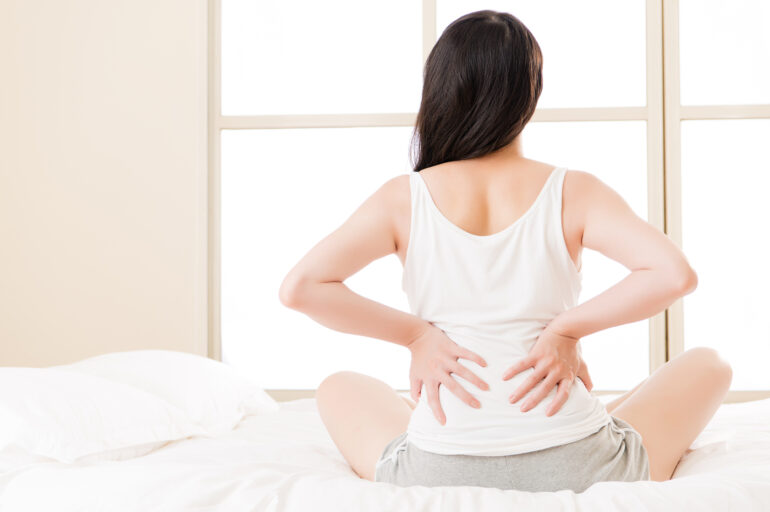
Postpartum back pain, particularly in the lower back, is a common issue attributed to the effects of the hormone relaxin released during pregnancy. This hormone, which remains in the body for up to 6 weeks postpartum, causes the muscles and ligaments in the lower back and pelvic region to loosen to accommodate the growing baby. However, an excess of relaxin may lead to joint instability, as some muscles and ligaments relax excessively. Compensation of the muscles, usually by tightening, would then occur as you lift your baby, and lean over their crib or bassinet, inducing pain.
From a TCM perspective, pain is present when there is a stagnation of Qi and Blood. Other than the treatments such as FIR and acupuncture which are mentioned above, mummies can also try cupping. Cupping therapy aims to promote the movement of Qi and Blood in the body. The suction pulls the skin and underlying tissues into the cup which can release the tension in the muscles and fascia (connective tissues underneath skin), and break up scar tissue adhesions, allowing better flow of blood to the area and reducing inflammation. This frees the bound muscular tissue for improved range of motion and performance[13].
Helping new moms transitioning back to work
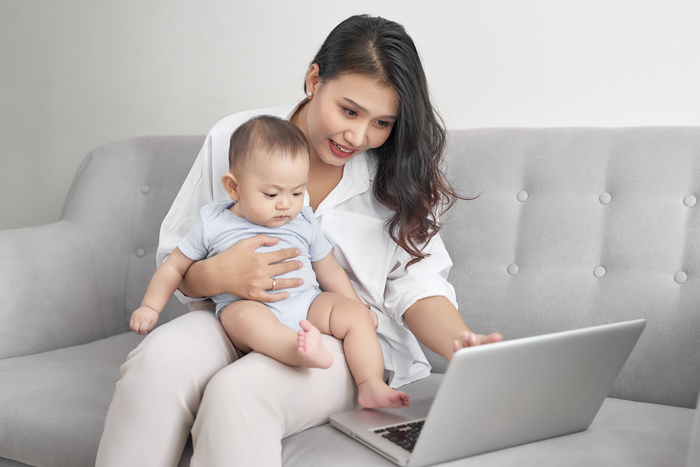
After four months of adapting to motherhood, a fresh set of challenges emerges when moms return to work. It’s undoubtedly a tough transition, and stress levels can soar as moms navigate the delicate balance between work and family. The sensation of feeling “drained out” may gradually set in, and moms might encounter symptoms like fatigue and indigestion. These factors can influence their work performance and have long-term implications for their overall well-being.
From a TCM perspective, these challenges stem from an overworked Spleen and Liver. The Spleen is responsible for digestion and nutrient absorption, while the Liver transports nutrients by regulating Qi. Since the beginning of pregnancy, these two organs have been working tirelessly to provide for both the baby and the mother. Hence, it’s crucial to support their recovery.
How can TCM support mummies returning to work?
Other than herbal medication to restore the balance of the inner organs, you can also consider Electro-Lymphatic Therapy (ELT). This FDA-approved, non-invasive technology stimulates the proper flow and drainage of the lymphatic system crucial for detoxification and maintaining cellular health. Congestion in the lymphatic system can hinder detox processes, leading to an accumulation of waste and suboptimal nutrient absorption by cells, resulting in poor health. ELT promotes lymphatic drainage, offering a relaxing and pain-free therapy to enhance health without compromising on comfort.
Implementing self-care at home, including practices such as avoiding cold drinks, ensuring sufficient bedrest with light walking, and maintaining a well-balanced diet during the initial six weeks, can aid organ recovery and replenish depleted energy reserves. This proactive approach reduces the risk of health issues as moms gradually resume more activities.
For personalised guidance, mummies can visit our TCM clinics to receive a thorough diagnosis and tailored lifestyle and diet advice based on their body constitution. Our experienced practitioners will provide comprehensive support to enhance your overall well-being during the postpartum period.
Focus on Baby’s Well-Being
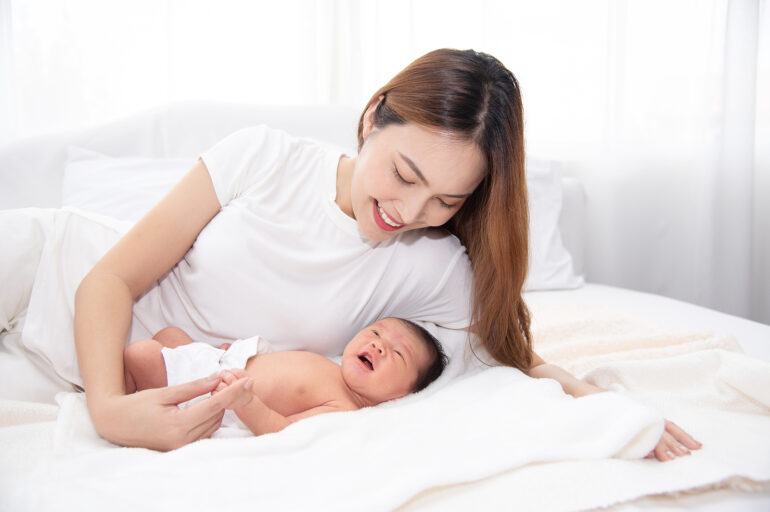
Being a new parent often comes with unexpected challenges, including managing an ill child. With the little one unable to communicate their discomfort verbally, the observational skills of the caregiver are often tested. Observing symptoms like fever, cough, changes in appetite, bowel movements, and sleep patterns requires patience. The avoidance of medication or injections by children complicates the caregiver’s task. To address discomfort, TCM recommends paediatric massage as a gentle and effective alternative. Paediatric massage can be used to prevent common diseases of the respiratory and digestive system[15] and support the development of the child [16] in the long run. As it directly restores the imbalance of Yin and Yang, it would help to strengthen the health and immunity of the child, improve their body constitution and increase the child’s resistance against diseases [17].
Try this at home!
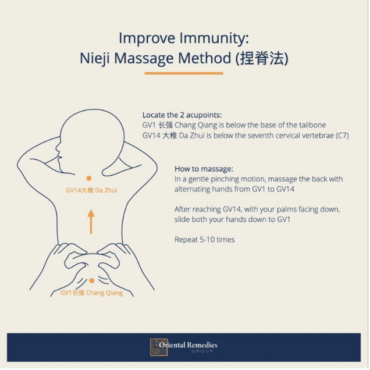
Ensuring your well-being after childbirth is crucial, not just for you but also for your little one. Taking care of yourself means you can provide the best care for your baby. It’s like investing in your own superpower as a mom!
TCM offers time-tested practices to support both your physical and emotional health during this postpartum period. It’s a holistic approach that considers your overall well-being. Remember, reaching out for support and exploring holistic approaches like TCM can make a significant difference in your postpartum journey. Taking care of yourself is a professional and essential step towards being the best mom you can be! 🌟
Your healing is the most important!
At Oriental Remedies Group, most of our physicians are trained in both Biomedical Science and TCM at Nanyang Technological University (Singapore) and China for a minimum of 5-8 years before being certified to practise in Singapore. If you or your loved one is looking for a holistic approach towards mum and baby’s overall wellness, consult our physicians at +65 8742 2163 for a targeted treatment plan.
—–
This article is written by Physician Kuah Xiu Juan, (Oriental Remedies Group, Singapore), a registered TCM physician certified by the Traditional Chinese Medicine Practitioners Board (TCMPB).
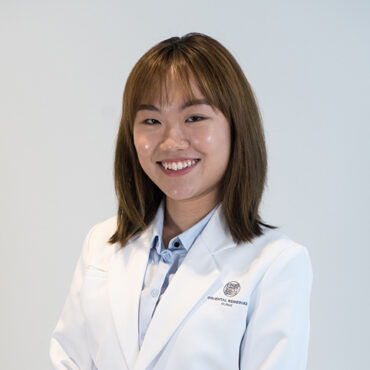
Disclaimer:
The content on this page is for information and educational purposes only. Such medical information may relate to disease, injury, drugs and other treatments, medical devices and/or health products. Medical information does not amount to advice, and if advice is needed an appropriate professional help should be sought. The disclaimer asserts that no warranties or representations are given in respect of the medical information, and that the website operator should not be held liable if a user suffers any injury or loss after relying upon the medical information.
Any devices used for technology-enhanced therapies are intended for use only for general well-being purposes or to encourage or maintain a healthy lifestyle, and is not intended to be used for any medical purpose (such as the detection. diagnosis, monitoring, management or treatment of any medical condition or disease). Any health-related information provided by this device or software should not be treated as medical advice.
References:
[1] Singhealth (Postnatal Depression. Retrieved on September 23, 2023,
from: https://www.singhealth.com.sg/patient-care/conditions-treatments/postnatal-depression-mental-wellness
[2] Ng, Sabrina & Jalelah Abu Baker (2023). ‘I was struggling to get up in the morning’: Postpartum depression and the importance of seeking help. Retrieved on September 23 ,2023,
from: https://www.channelnewsasia.com/singapore/what-postpartum-depression-how-seek-help-kkh-3605126
[3] Chee CY, Lee DT, Chong YS, Tan LK, Ng TP, Fones CS. (2005). Confinement and other psychosocial factors in perinatal depression: a transcultural study in Singapore. J Affect Disord. 2005;89(1-3):157-166. doi:10.1016/j.jad.2005.09.004. Retrieved on Jan 13, 2024 , from
[4] KK Women’s and children’s hospital . MCHRI launches Singapore’s first set of guidelines on perinatal mental health – SingHealth. Retrieved on January 12, 2024,
from: https://www.kkh.com.sg/news/announcements/mchri-launches-singapores-first-set-of-guidelines-on-perinatal-mental-health#:~:text=In%20Singapore%2C%20postnatal%20depression%20affects,rising%20incidence%20of%20maternal%20depression
[5] Pediatric Tui Na Treats a Variety of Childhood Ailments. (2019). Retrieved on October 30, 2023,
from: https://www.pacificcollege.edu/news/blog/2015/01/19/pediatric-tui-na-treats-variety-childhood-ailments
[6] hJae-Suk Choi, Min-Hee Jeon, Woi-Sook Moon, Jin-Nam Moon, Eun Jin Cheon, Joo-Wan Kim, Sung Kyu Jung, Yi-Hwa Ji, Sang Wook Son, Mi-Ryung Kim, In Vivo Hair Growth-Promoting Effect of Rice Bran Extract Prepared by Supercritical Carbon Dioxide Fluid, Biological and Pharmaceutical Bulletin, 2014, Volume 37, Issue 1, Pages 44-53, Released on J-STAGE January 01, 2014, Online ISSN 1347-5215, Print ISSN 0918-6158, https://doi.org/10.1248/bpb.b13-00528. Retrieved on January 13, 2024,
from: https://www.jstage.jst.go.jp/article/bpb/37/1/37_b13-00528/_article/-char/en
[7] hLuang-In, Thai Journal of Pharmaceutical Sciences (TJPS), Bioactivities of organic riceberry broken rice and crude riceberry rice oil. Retrieved on Jan 13, 2024,
from: http://www.tjps.pharm.chula.ac.th/ojs/index.php/tjps/article/view/606
[8] Soma-Pillay P, Nelson-Piercy C, Tolppanen H, Mebazaa A. Physiological changes in pregnancy. Cardiovasc J Afr. 2016;27(2):89-94. doi:10.5830/CVJA-2016-021. Retrieved on Jan 13, 2024,
from: https://pubmed.ncbi.nlm.nih.gov/27213856/
[9] Doddaballapur S. Microneedling with dermaroller. J Cutan Aesthet Surg. 2009 Jul;2(2):110-1. doi: 10.4103/0974-2077.58529. PMID: 20808602; PMCID: PMC2918341. Retrieved on Jan 13, 2024,
from: https://pubmed.ncbi.nlm.nih.gov/20808602/
[10] Kou L, Yu N, Ren J, Yang B, Tao Y. Observation for clinical effect of acupuncture combined with conventional therapy in the treatment of acne vulgaris. Medicine (Baltimore). 2020 May;99(18):e19764. doi: 10.1097/MD.0000000000019764. PMID: 32358349; PMCID: PMC7440346. Retrieved on Jan 13, 2024,
from: https://www.ncbi.nlm.nih.gov/pmc/articles/PMC7440346/
How Does Infrared Therapy Work? .Retrieved on Jan 13, 2024,
from: https://www.news-medical.net/health/How-Does-Infrared-Therapy-Work.aspx#:~:text=Unlike%20ultraviolet%20light%20%2D%20which%20has,deep%20tissues%20and%20relieving%20pain.
[12] Karu TI, Pyatibrat LV, Afanasyeva NI. Cellular effects of low power laser therapy can be mediated by nitric oxide. Lasers Surg Med. 2005 Apr;36(4):307-14. doi: 10.1002/lsm.20148. PMID: 15739174. Retrieved on Jan 13, 2024
from: https://pubmed.ncbi.nlm.nih.gov/15739174/
[13] Ferraresi C, Huang YY, Hamblin MR. Photobiomodulation in human muscle tissue: an advantage in sports performance? J Biophotonics. 2016 Dec;9(11-12):1273-1299. doi: 10.1002/jbio.201600176. Epub 2016 Nov 22. PMID: 27874264; PMCID: PMC5167494. Retrieved on Jan 13, 2024,
from: https://www.ncbi.nlm.nih.gov/pmc/articles/PMC5167494/
[14] Lowe DT. Cupping therapy: An analysis of the effects of suction on skin and the possible influence on human health. Complement Ther Clin Pract. 2017 Nov;29:162-168. doi: 10.1016/j.ctcp.2017.09.008. Epub 2017 Sep 14. PMID: 29122256. Retrieved on Jan 13, 2024,
from: https://pubmed.ncbi.nlm.nih.gov/29122256/
[15] Zhang, X., Guo, T., Zhu, B., Gao, Q., Wang, H., Tai, X., & Jing, F. (2018). Pediatric Tuina for promoting growth and development of preterm infants: A protocol for the systematic review of randomized controlled trail. Medicine, 97(18), e0574. Retrieved on October 30, 2023
from: https://doi.org/10.1097/MD.000000000001057
[16] 管婧 ( 龙泉市人民医院 ) (2022). 小儿推拿在儿童保健中的临床应用效果. Retrieved on 30 October 2023,
from: https://doi.org/10.37155/2717-5650-0306-15
[17] Ang JY, Lua JL, Mathur A, Thomas R, Asmar BI, Savasan S, Buck S, Long M, Shankaran S. A randomized placebo-controlled trial of massage therapy on the immune system of preterm infants. Pediatrics. 2012 Dec;130(6):e1549-58. doi: 10.1542/peds.2012-0196. Epub 2012 Nov 12. PMID: 23147978; PMCID: PMC3507248. Retrieved on Jan 13, 2024,
from: https://pubmed.ncbi.nlm.nih.gov/23147978/

